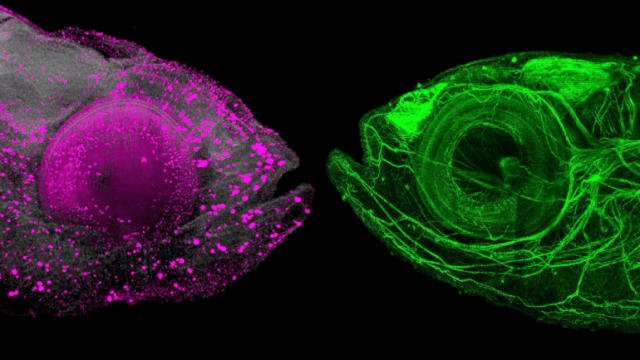Analyzes of single cells in whole tissues or organs are becoming increasingly important in biology.
Finally, a new technology allowed researchers to look deeply into the tissues, organs and nervous systems of a large number of animals such as squid, worms, fish and salamanders.
The technology is the result of a large collaborative project in which a large group of Austrian researchers participated from Max Perutz Laboratories, the University of Vienna, the Vienna Medical University, and the Technical University (Vienna).
The new method combines tissue cleaning and removal of different types of dyes (colors) characteristic of most animal tissues.
Scientists called this new approach "Deep-Clear" and it was published in the "International Journal of Science Advances" on May 29.
Traditional approach problems
The traditional method used to examine animal tissue samples was to cut the large tissues into very thin slices, study them separately, and then collect the information from examining these slices to build a three-dimensional model, a very laborious process, often producing incomplete results.
For example, the cells that make up our nervous systems have long stretches that can be connected throughout the entire body, and rebuilding them from thin slices is very difficult.
As for through color removal techniques, opaque tissue can be converted into transparent tissue and applied to complex tissue.
Here, these technologies allow the visualization of single cells and their extensions, allowing scientists to build three-dimensional models of cells and tissues without having to cut them into precise slices.
Deep-Clare
An important observation that helped to develop the new "Deep-Clair" technique was that the combination of different chemical treatments had a synergistic effect (supporting each other), which allowed the removal of colors, cleaning and clarification of tissues, and converting them into transparent tissues.
"The shortening of chemotherapy preserves the integrity of tissues and living organisms, so that they likely retain important molecules and internal structures," explains Marco Bendi from the University of Vienna Medical Center's Brain Research Center.
The team systematically explored the types of molecules in "deep-clear" samples, and the researchers studied species of squid, worms, fish, and salamanders.
The chief author of the study, Professor "Hans-Ulrich Dödt" explains that these are just a few examples, and it is believed that the method is applicable to multiple other organisms that have not yet been tried.
New features
This work - which was largely done by doctoral student "Karim Fadewala" in Max Beiruts laboratories - showed that the "Deep-Clear" approach was consistent with the detection of a variety of important biomolecules, which allowed their images to be imaged in sound samples.
"This diversity in the new method makes it a very attractive tool for exploring a group of animals that are not sufficient in the current standard cleaning and lamination techniques to treat them," Vadiola said.
Another attractive feature of the new technique is that the transparency of treated organisms allowed to visualize very small details such as points of contact between neurons.
On the other hand, researchers took advantage of the latest generation of optical panel microscopes in which two-dimensional laser light is used to scan a complete sample very quickly, resulting in the 3D model being easily produced on a computer.
"Using a very thin optical panel enables us to overcome many visual limitations and allows us to generate such high-resolution images, even from samples that are several millimeters thick," says microscope designer Dr. Saeed Al-Soghafi.
The team expects that the new technology will generalize tissue cleaning and leaching, allowing researchers worldwide to intensify molecular and cellular research, in a variety of animals that display interesting neuroscience features.

